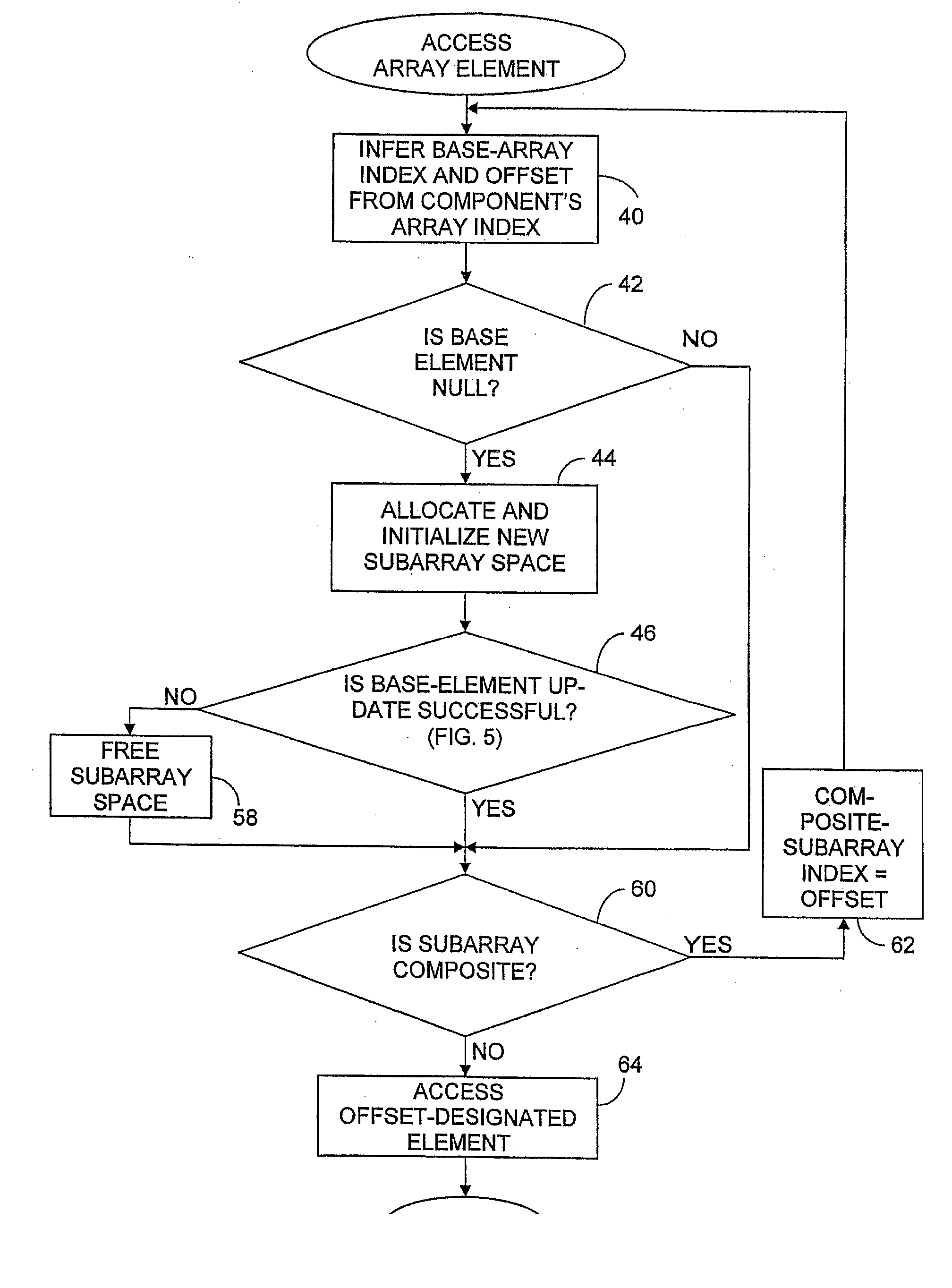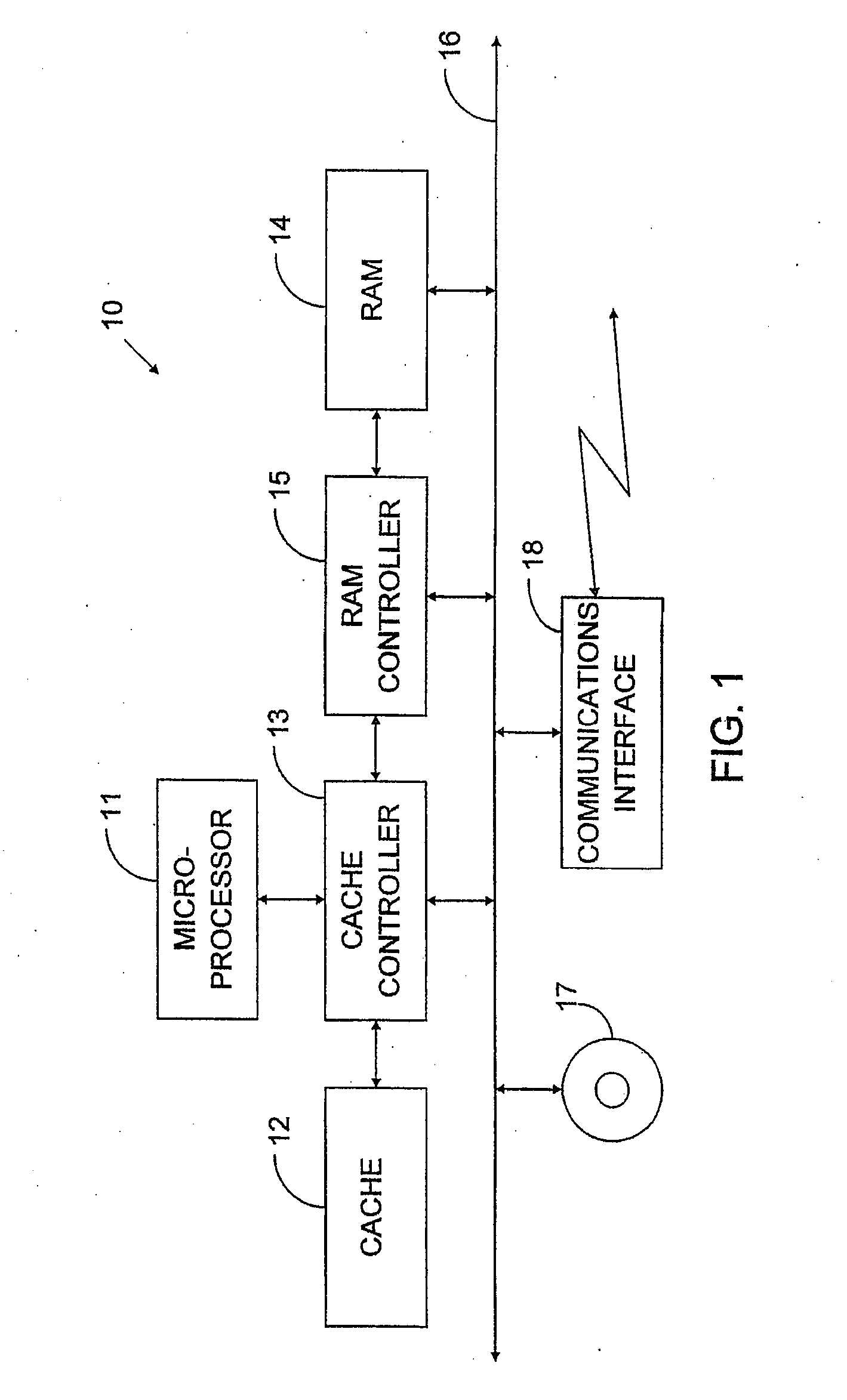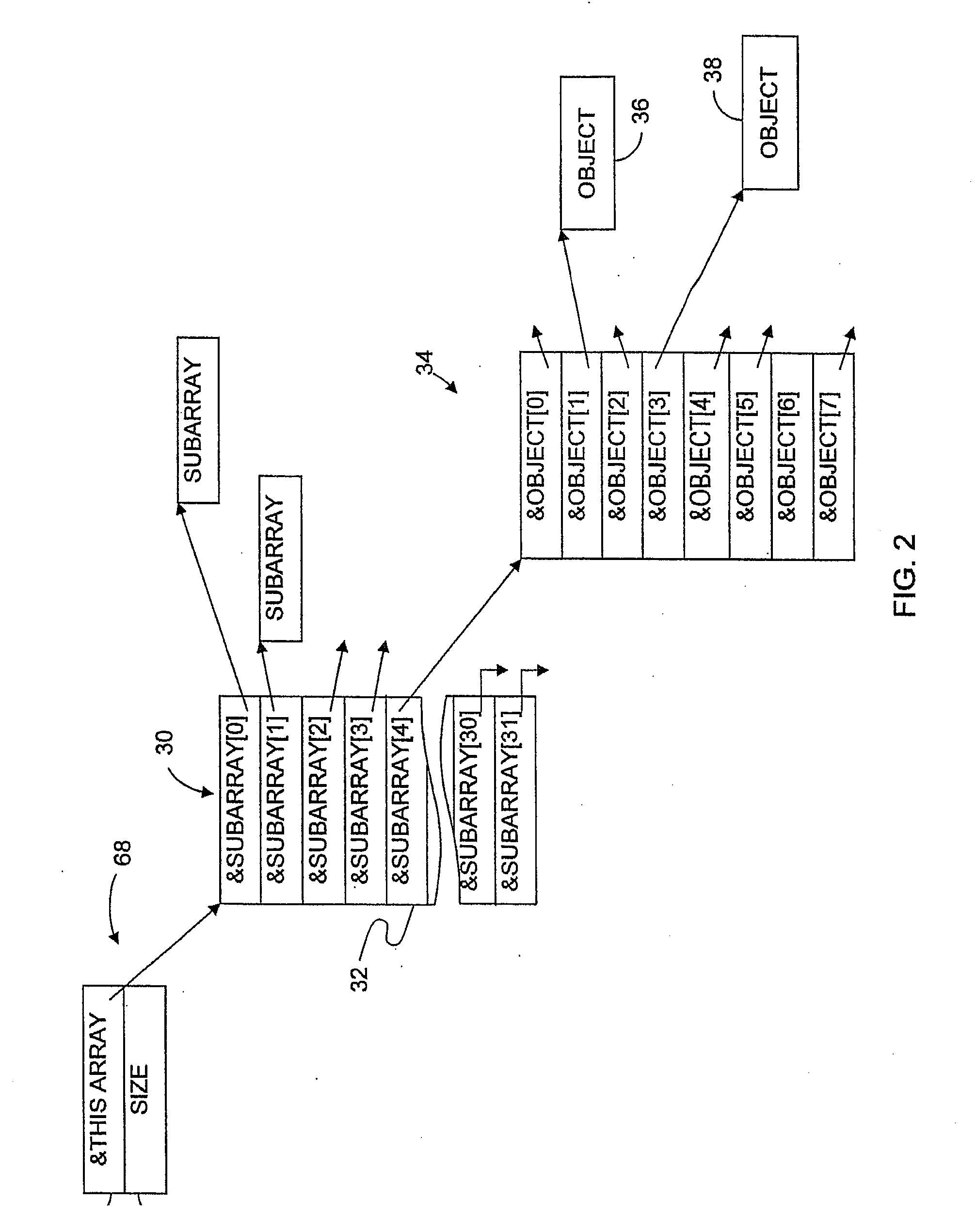Non-Blocking Growable Arrays
a growable array and non-blocking technology, applied in the field of accessing and maintaining arrays, can solve the problems of inconvenient restriction of arrays to fixed sizes, waste of allocation of maximum possible array sizes, and unknown ultimate needed sizes, so as to avoid most of the copying approach
- Summary
- Abstract
- Description
- Claims
- Application Information
AI Technical Summary
Benefits of technology
Problems solved by technology
Method used
Image
Examples
Embodiment Construction
[0024] A computer system configured to employ the present invention's teachings will respond to a request for an access to a growable array in a manner presently to be described. The computer system may be hardware-configured to provide such access, but it will more typically be configured in that manner by software, i.e., by sequences of instructions that, when the computer system executes them, will result in the behavior to be described below.
[0025]FIG. 1 depicts a typical computer system 10. Data that a microprocessor 11 uses and instructions for operating on them may reside in on-board cache memory or be received from further cache memory 12, possibly through the mediation of a cache controller 13. That controller 13 can in turn receive such data from system read / write memory (“RAM”) 14 through a RAM controller 15 or from various peripheral devices such as a communications interface 16 through a system bus 17. The memory space made available to an application program may be “v...
PUM
 Login to View More
Login to View More Abstract
Description
Claims
Application Information
 Login to View More
Login to View More - R&D
- Intellectual Property
- Life Sciences
- Materials
- Tech Scout
- Unparalleled Data Quality
- Higher Quality Content
- 60% Fewer Hallucinations
Browse by: Latest US Patents, China's latest patents, Technical Efficacy Thesaurus, Application Domain, Technology Topic, Popular Technical Reports.
© 2025 PatSnap. All rights reserved.Legal|Privacy policy|Modern Slavery Act Transparency Statement|Sitemap|About US| Contact US: help@patsnap.com



